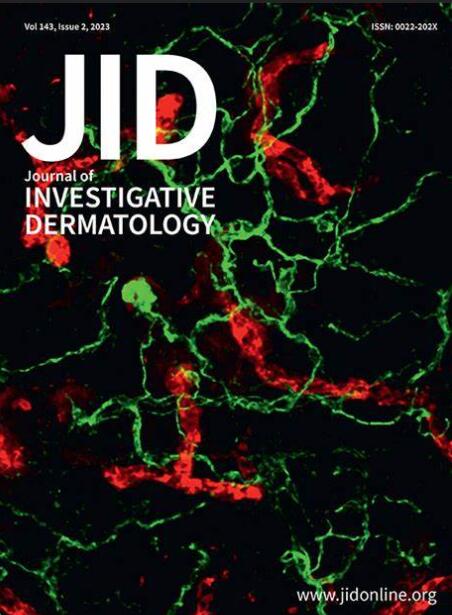真菌和宿主标记物在小鼠和人类表皮皮癣病模型中的表达。
IF 5.7
2区 医学
Q1 DERMATOLOGY
引用次数: 0
摘要
皮癣菌对抗真菌药物的抗药性不断增加,造成了全球性的公共卫生问题,因此必须更好地了解皮癣菌的致病机制和决定宿主特异性的因素。由于皮癣菌通过重编程基因表达从吸附性生活方式转变为寄生性生活方式,因此需要可靠的实验模型来研究皮癣的发病机制。在此,我们评估了一种相关的小鼠班氏毛癣菌皮癣病模型,以及一种基于重建人体表皮(RHE)的模型,从而验证了它们各自在感染过程中表达的真菌基因。使用标准化接种体诱导小鼠自然表皮感染。根据病变的严重程度和持续时间评估了感染标志物,包括小鼠特异性促炎分子和之前被报道为潜在毒力因子的真菌基因。受感染的 RHE 中真菌基因(包括编码枯草蛋白的基因)的表达上调表明,皮癣菌部署了与体内感染过程类似的过程。然后,利用 RHE 模型比较了嗜人类毛癣菌和嗜动物毛癣菌的感染情况。因此,这两种模型是研究急性皮癣病发病机制的互补分析工具。此外,我们还确定了某些真菌感染的标志物,并强调了嗜动物和嗜人类皮癣菌所采用的不同机制。本文章由计算机程序翻译,如有差异,请以英文原文为准。
Expression of Fungal and Host Markers in Models of Dermatophytosis on Mice and Human Epidermis
Increasing resistance of dermatophytes against antifungals creates global public health problems, rendering essential a better understanding of virulence mechanisms and factors determining host specificity of dermatophytes. Because dermatophytes switch from a saprophytic to a parasitic lifestyle by reprogramming gene expression, reliable experimental models are needed to investigate the pathogenesis of dermatophytosis. In this study, a relevant mouse model of Trichophyton benhamiae dermatophytosis was assessed, together with a model based on reconstructed human epidermis, allowing their respective validation regarding fungal gene expressed during infection. The use of a standardized inoculum induced a natural-like superficial infection in mice. The severity and persistence of lesions enabled the assessment of infection markers, including mouse-specific proinflammatory molecules and fungal genes previously reported as potential virulence factors. Upregulated expression of fungal genes, including those encoding subtilisins, in infected reconstructed human epidermis revealed that dermatophytes deploy similar processes as those observed during in vivo infection. The reconstructed human epidermis model was then used to compare infections by anthropophilic T rubrum and zoophilic T benhamiae. Therefore, these 2 models represent complementary analytical tools to study the pathogenesis of acute dermatophytoses. In addition, we have identified certain fungal markers of infection and highlighted the existence of different mechanisms deployed by zoophilic versus anthropophilic dermatophytes.
求助全文
通过发布文献求助,成功后即可免费获取论文全文。
去求助
来源期刊
CiteScore
8.70
自引率
4.60%
发文量
1610
审稿时长
2 months
期刊介绍:
Journal of Investigative Dermatology (JID) publishes reports describing original research on all aspects of cutaneous biology and skin disease. Topics include biochemistry, biophysics, carcinogenesis, cell regulation, clinical research, development, embryology, epidemiology and other population-based research, extracellular matrix, genetics, immunology, melanocyte biology, microbiology, molecular and cell biology, pathology, percutaneous absorption, pharmacology, photobiology, physiology, skin structure, and wound healing

 求助内容:
求助内容: 应助结果提醒方式:
应助结果提醒方式:


